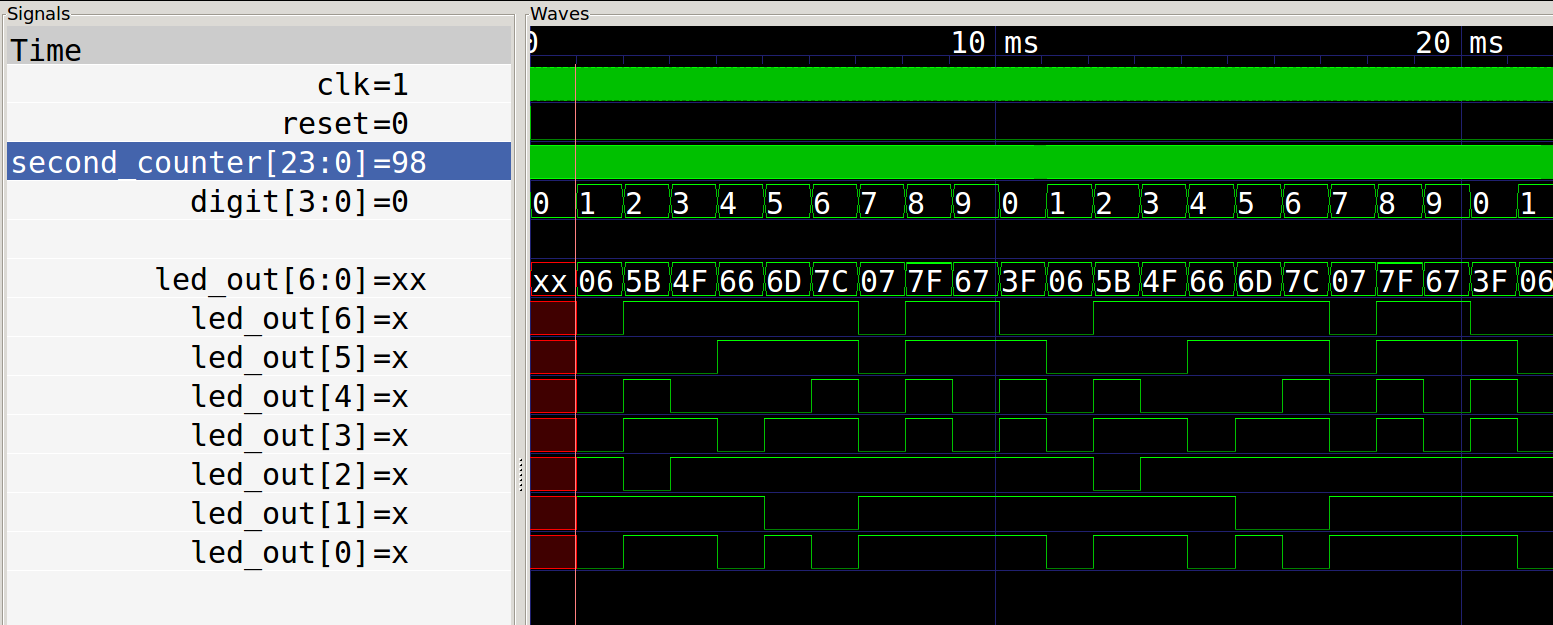Simulation
Simulation lets us see the design working. It’s useful for debugging while designing and it can also be used to verify that the design is working correctly.
There are two main types of simulations: digital simulation, and analogue or circuit simulation. Digital simulation models all signals as either 1’s and 0’s or a small number of values to model tristates and uninitialised values. Analogue simulation model voltages and currents and look in detail at the way devices work. Analogue simulations are very compute intensive - it is unusual to simulate circuits larger than a few hundred transistors. Digital simulators are designed to verify the functionality of large circuits, but are not accurate on voltages and may not even estimate timing delays at all. The fastest digital simulators only capture the values at the end of each clock cycle (cycle-based simulators).
The classic analogue chip simulator is SPICE (Simulation Program with Integrated Circuit Emphasis). It is often used to characterise standard cells, to build the timing models that underly STA.
There are quite a few Open Source digital simulators available: Icarus Verilog, Verilator and recently CXXRTL.
For digital simulation, we provide our HDL design and a testbench and we get back a data dump of the results of the simulation. The data is usually in the form of a VCD (value change dump). This is a way of minimising file sizes, values are only recorded when a signal changes, not at every time step. It’s not unusual to get multi-gigabyte dump files.
Here’s an example dump from the seven segment seconds example.

The testbench provides a clock and reset if required, and then runs the design for some time, capturing and maybe toggling various signals. Above you can see the clock toggling too fast to see at this scale, and the digits slowly counting up to 9 and rolling over to 0. Underneath you can see the various elements of a 7 segment display turning on and off to show the digit.
Traditionally testbenches have been written in Verilog, but I am now using a testing framework called coco-tb. This makes it much easier to provide complex stimulus to the device under test (DUT).
Jump to 3:27 in this video to see a demonstration of cocotb being used to pass wavefiles through a filter implemented for an FPGA.
Simulation on its own can take us a fair way, but to be sure you should also verify your design.
Course feedback
Having the formal verification part additionally felt nice, that I could have something that I know is going to be functional instead of just guessing for a long time and then looking at waveforms and then not knowing what hell I'm doing!